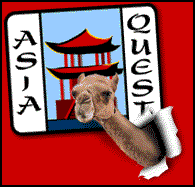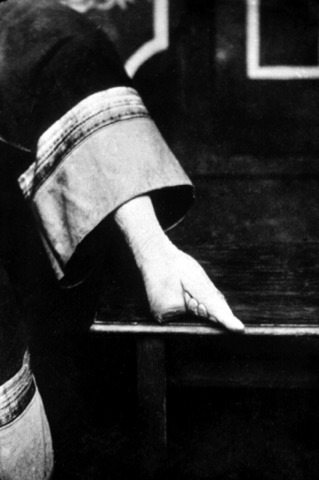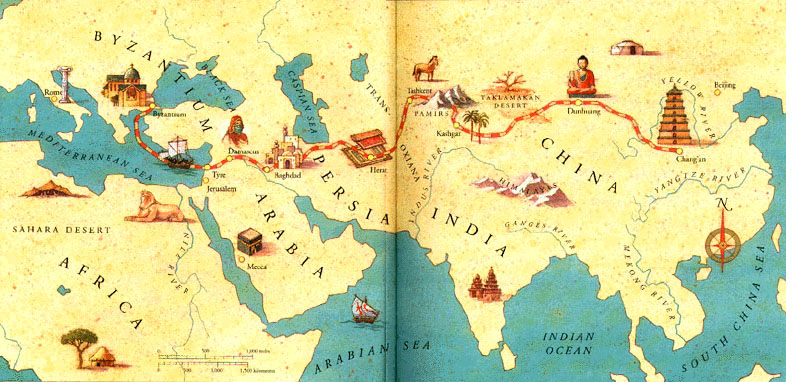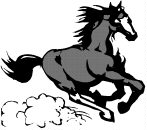

Asia Quest Expert Group
Truman Middle School
Your
first challenge was to identify what was in this picture and why
it was important to Chinese history. Were you able to identify this as a bound foot?
Notice the toes under the foot! Why did the Chinese do this to
their daughters?
Were you able to identify this as a bound foot?
Notice the toes under the foot! Why did the Chinese do this to
their daughters?
Read more about this custom below.
In the tenth century in China, a prince began the practice of foot binding because he loved the small 'lily feet' of his concubine. Thus traditional Chinese values for over 1000 years dictated that the feet of young girls should be bound to keep them small. 'Lily feet', as they were called, were thought to be very dainty and beautiful and a symbol of gentility and high-class. Although the term sounded harmless, it was really very cruel. It began when a girl was between three and eleven years old. First her foot was washed in hot water and massaged. Then the child's toes were turned under and pressed against the bottom of her foot. The arches were broken as the foot was pulled straight with the leg, and a long narrow cotton bandage would be tightly wound around the foot from the toes to the ankle to hold the toes in place.
After two or three years, a girl's feet actually shrank -- until they could fit into shoes just three inches long. This resulted in feet that were very deformed and unbearably painful to walk on. Sometimes the toes even fell off, because blood could no longer reach them. Besides identifying women of gentility or high-class, it prevented women from "wandering," since the bound with bound feet was unable to walk unassisted, and even going a short distance was very painful. These women had to walk with very short mincing steps and could stand only with great difficulty.
Tiny 3-inch-long shoes, called 'lotus shoes', were made of silk and were beautifully embroidered. In the upper classes in China, a good marriage would be impossible to arrange if the girl had "big ugly feet." The practice of foot binding continued in Chin a for over 1000 years until the Manchu Dynasty was toppled in 1911 and the new republic was formed. Foot binding was then outlawed.
Few Chinese women and girls who came to California had their feet bound as small children in China, but those who did had to spend their lives with the tiny useless feet. However, many of them did manage to walk and could do light household tasks and cook ing. Sometimes, the young girls would have the bindings removed and often their feet would grow enough to permit normal walking. Most of these people migrated to San Francisco and other cities where the upper class Chinese ran lucrative businesses.
Women from the peasant and working classes did not have their feet bound as children because if was necessary for them to be able to work in the home and fields. As these were more frequently the women who came to America, most of the immigrant women did not have bound feet. Most of the Chinese who migrated to the Santa Clara Valley were from this class.
In order to perform your duties as an "expert" on China and its history, you will need to do some research.
![]()
Use these links to sites on the Internet to increase your knowledge about the rich history of China.
![]()
A wealth of information about China can be found here.
![]()
Information about Kublai Khan can be found here.
![]()
Information about children in China can be found here.
![]()
"Visions of China" can be found here.
![]()
The secrets of the Great Wall can be found here.
![]()
Information about the "Silk Road" can be found here.
![]()
The "Treasures of China" can be found here.
![]()
Information about the ferocious Genghis Khan can be found here.
![]()
You can learn what it's like to be a Mongol here.
![]()
Information about exploring China can be found here.
![]()
Information about China's place in the modern world can be found here.
![]()
Additional information about China can be found here.
![]()
In your personal quest to become an expert, you may use additional resources from the library, newspapers or magazines.
![]()
Here is your first question to research. Read the background information and write a short essay to answer this question that another student might send to you as the "expert"
I have been reading about the
Silk Road in ancient China. It sounds like a pretty road but I
have read that this is not true. What exactly was the Silk Road
and how did it get its name? Could I go there now and see it?
Are you ready for another research challenge?
You may recognize this man. He is Marco Polo, the Italian explorer.

Why is he so famous? What is he supposed to have seen during his adventures? Why do some historians now believe that he may not have been to China after all? What is missing from his accounts of ancient China?
Do some research and then write a short essay that could be sent as an e-mail response to another student.
In his writings, Marco Polo described many animals which Europeans had never seen. One of these was a dromedary. Write a description of this unusual animal.
![]()
Here are some research questions about the Mongol legacy.
Kublai Khan was an influential character in Asian history. After reading the background information, write an essay which adddresses the relationship between Marco Polo and Kublai Khan, the methods of controlling his vast empire used by Kublai Khan and the innovations we use today which began during the reign of Kublai Khan.

![]()
How were the Mongol people of Inner Mongolia able to resist becoming part of China?
Do some research and write your response in the form of a brief essay.
What part did Kublai Khan play in the spread of Buddhism throughout Asia?
![]()
Describe the important role which animals played in the life of the Mongol people.

![]()
This site was designed by Patricia H. Rynearson
|
 |
>